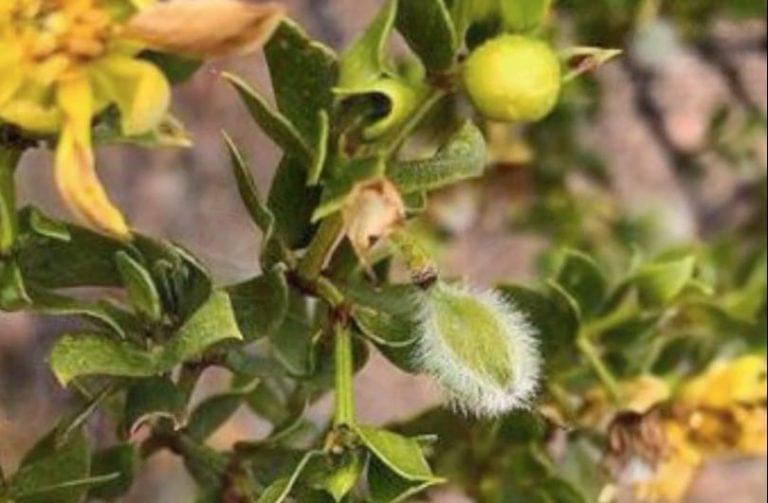Larrea tridentata commonly known as Creosote Bush is a shrub endemic to the arid regions of the North American Southwest. Larrea has been used in traditional and modern herbal applications both internally and topically. It’s also an important plant in Native medicine and culture of its home territory.
Medicinal Uses of Larrea tridentata:
Larrea is an aromatic bitter that is mildly astringent. The aromatic compounds (as with all aromatic rich plants) lend to its anti-microbial and antibacterial properties. As an alliterative (a substance that stimulates the bodies own defenses in the presence of disease) Larrea has been used for thousands of years for treating colds and flu’s and other aliments. As a bitter Larrea aids in digestion and is useful for helping with digestive complaints of both a viral and a bacterial nature.
Growth
Larrea tridentata grows in the American Southwest, preferring the heat and dry climate of the open desert, although you can also find it in transitional zones at the edges of desert grasskabds. You’ll catch Larrea’s scent in the Mojave, Sonoran, and Chihuahuan desert areas when you visit southwestern Utah, New Mexico, Arizona, Nevada, and Southern California as well as areas of Northern Mexico.
Did you Know?
- Larrea is the plant the Fremen of Arrakis use to prevent dehydration in Dune by Frank Herbert.
- Jimmy Buffet immortalized the scent of Larrea in “Life is just a Tire Swing.”
- Mary Hunter Austin described Larrea as the gateway to the Desert in The Land of Little Rain.
- Norman McLean said, “Prize the natural spaces and shorelines most of all, because once they’re gone, with rare exceptions they’re gone forever. In our bones we need the natural curves of hills, the scent of chaparral, the whisper of pines, the possibility of wilderness.”
- Sara Becker’s Cresote Women hints at the healing power of Larrea tridentata and its Desert home.
Learn more about Chaparral:
Please join Christina at Every Leaf Speaks for the Exploration of Ancient Desert Medicine where she will delve into more than just medicinal usage of this primordial plant and why we should cultivate our own medicinal plants or source from those who cultivate rather than wildcrafting.
See also: The Medicine Chest of the Desert
This post was written by Candace Hunter and Christina Sanchez.






